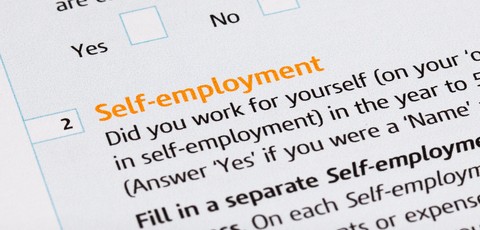Becoming ‘self-employed’ is the most popular means of starting up a new business. You can become self-employed through becoming a sole trader or forming a partnership. Sole traders make up over 60% of all UK businesses (3.4 million), and partnerships account for another 7% (414,000). Here we look at the basics of what is a sole trader and things you should consider before taking the leap.

Being a sole trader – the basics
- Being a sole trader is the same as being ‘self-employed’.
- As a sole trader, you run your business as an individual.
- A ‘partnership’ is an agreement between two or more sole traders to set up a business together.
- You can choose a business name (subject to certain rules), or your own name.
- As a sole trader you don’t need to have a separate business bank account, however, there are many benefits to doing so, such as keeping your personal and business expenditure separate.
- You will need to register for self-assessment with HMRC, and if you’re a partnership, the partnership itself must file a separate tax return.
- All your business profits can be taken by you after you’ve paid the tax you owe.
- You must pay your tax and National Insurance liabilities on time.
- The self-employed pay Class 2 (weekly) and Class 4 (annually) National Insurance Contributions.
- If you employ other people, you will need to operate a PAYE payroll scheme and collect taxes from your employees on behalf of HMRC.
- You must register for VAT if your annual turnover is £85,000 or more (2019/20 tax year).
- You must keep accurate records of all your business transactions, including all sales and expenses, and bank records.
- Your business records should be kept safe for a minimum of six years.
- You are personally liable for any business debts you may incur (unlike the limited company structure).
- If you set up in business with other people, you should draw up a ‘deed of partnership’ to detail who does what, and what happens if things go wrong.
Sole Trader vs. Limited Company
The easiest, most ‘hassle-free’ route to starting a new business is to become self-employed. You need to register to pay tax as a sole trader or partnership with HMRC, and can start trading right away (subject to any specific regulations which may apply to your trade).
There is certainly less ‘red tape’ being a sole trader compared to the limited company route. As long as you file your annual self-assessment form, pay your tax liabilities, and comply with business and employment laws, the ‘self-employed’ are not regulated by Companies House, and the overall administrative burden for sole traders is less.
However, unlike the limited company business structure (where the liability of directors is limited), as a sole trader you and your business are treated as a single entity, so you are personally liable should things go wrong with your business. There are many difference between the sole trader and the limited company business structures.
The next steps – getting started as a sole trader
We’ve covered the steps you need to take to register as self-employed in our dedicated article here.
More on limited companies and business structures.


Follow Company Bug